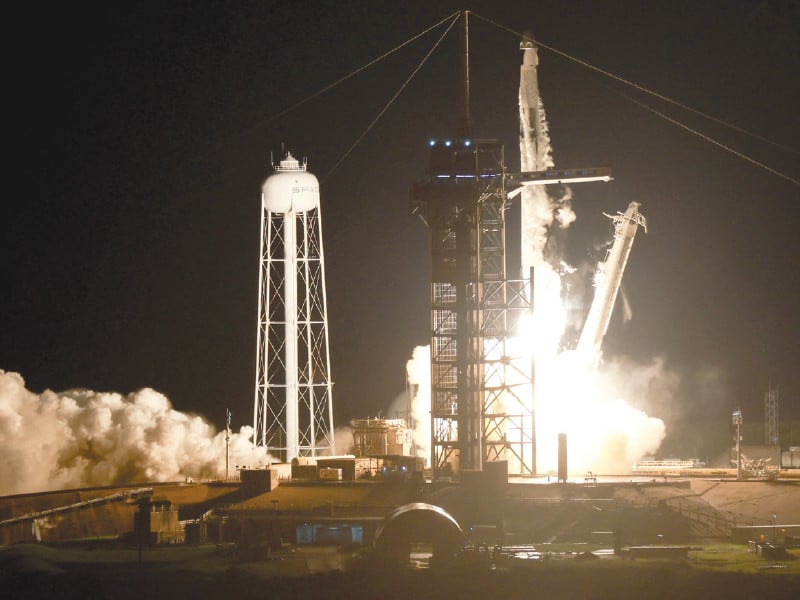
SpaceX has successfully launched two Galileo navigation satellites for the European Union from Cape Canaveral Space Force Station in Florida.
The Falcon 9 rocket carrying the satellites lifted off at 6:50 p.m. EDT (2250 UTC), marking a significant step in expanding the Galileo satellite constellation, Europe's equivalent to the US Global Positioning System (GPS).
The launch, dubbed the Galileo L13 mission, is the second time Galileo satellites have been sent into orbit from US soil, following the L12 mission in April 2024.
Both missions were conducted using SpaceX’s Falcon 9 rocket.
The Galileo satellites, designated FOC FM26 and FM32, are part of the Full Operational Capability (FOC) series, which aims to strengthen the accuracy and availability of the Galileo system.
These satellites will join the operational constellation at an altitude of approximately 23,200 kilometres (14,416 miles) in medium Earth orbit.
The mission carried out the deployment of the two spacecraft, which weigh 2.3 tons (4,600 pounds) each and have a projected operational lifespan of 15 years.
The Galileo system, managed by the European Union Agency for the Space Programme (EUSPA) in collaboration with Airbus as the manufacturer, is designed to provide highly accurate positioning data to over 4 billion users worldwide.
With the addition of these satellites, the total number in the Galileo constellation will increase to 32, further enhancing its positioning accuracy and availability.
"This latest addition to the Galileo system reaffirms its status as the world's most accurate positioning system," said EUSPA Executive Director Rodrigo da Costa.
He emphasised that the partnership between the European Commission, EUSPA, and the European Space Agency (ESA) drives both innovation and economic growth, creating new opportunities for European businesses.
The Falcon 9’s first stage booster, designated B1067, had a notable history, supporting 22 prior missions, including astronaut and cargo flights to the International Space Station (ISS) and several Starlink missions. About 8.5 minutes after liftoff, the booster successfully landed on the droneship Just Read the Instructions stationed in the Atlantic Ocean.
This mission differed from the previous Galileo launch in April, where the booster was expended to ensure sufficient performance to deliver the payload to its orbit.
However, data from that mission allowed SpaceX to make design and operational adjustments to recover and reuse the booster on this flight.
Prior to launch, weather conditions were uncertain, with a forecast indicating a 40% chance of favorable weather at liftoff and moderate risks for booster recovery due to higher-than-usual heating and dynamic pressure during reentry. Despite these challenges, the landing was executed successfully, further advancing SpaceX’s reusability goals.
Galileo’s expansion through the L13 mission reflects Europe’s continued commitment to its space infrastructure, especially after the loss of other launch options, such as the Russian Soyuz rockets and the retirement of Europe’s Ariane 5 heavy-lift vehicle.
With the ongoing development of the Ariane 6, Europe aims to maintain its access to space while relying on partnerships with SpaceX to sustain critical satellite launches in the interim.
This successful launch and recovery highlight SpaceX's role in supporting global satellite navigation systems while continuing to refine its rocket reusability technology.
The deployment of the Galileo satellites is expected to take place approximately 3.5 hours after liftoff.



1737442119-0/BeFunky-collage-(12)1737442119-0-165x106.webp)
1737416356-0/Trump-(9)1737416356-0-165x106.webp)



1737545587-0/Tribune-N-(7)1737545587-0-270x192.webp)
1737544370-0/sidra--(17)1737544370-0-270x192.webp)


1726224192-0/musk-(2)1726224192-0-270x192.webp)



1737614355-0/Express-Tribune-(1)1737614355-0-270x192.webp)








COMMENTS
Comments are moderated and generally will be posted if they are on-topic and not abusive.
For more information, please see our Comments FAQ